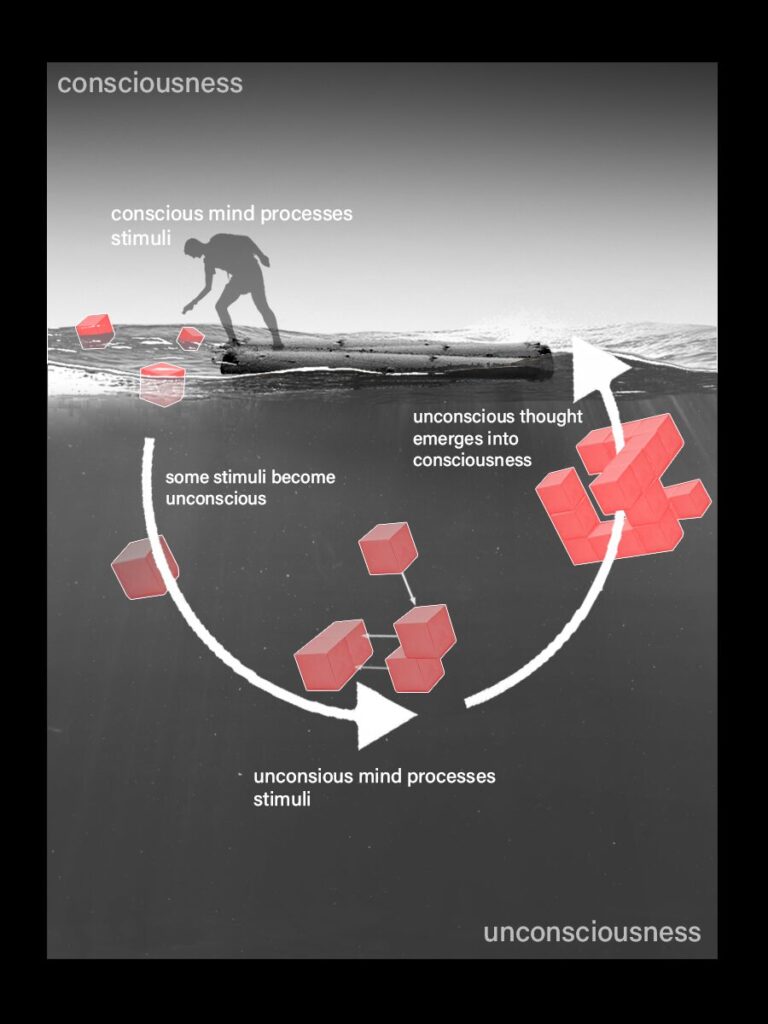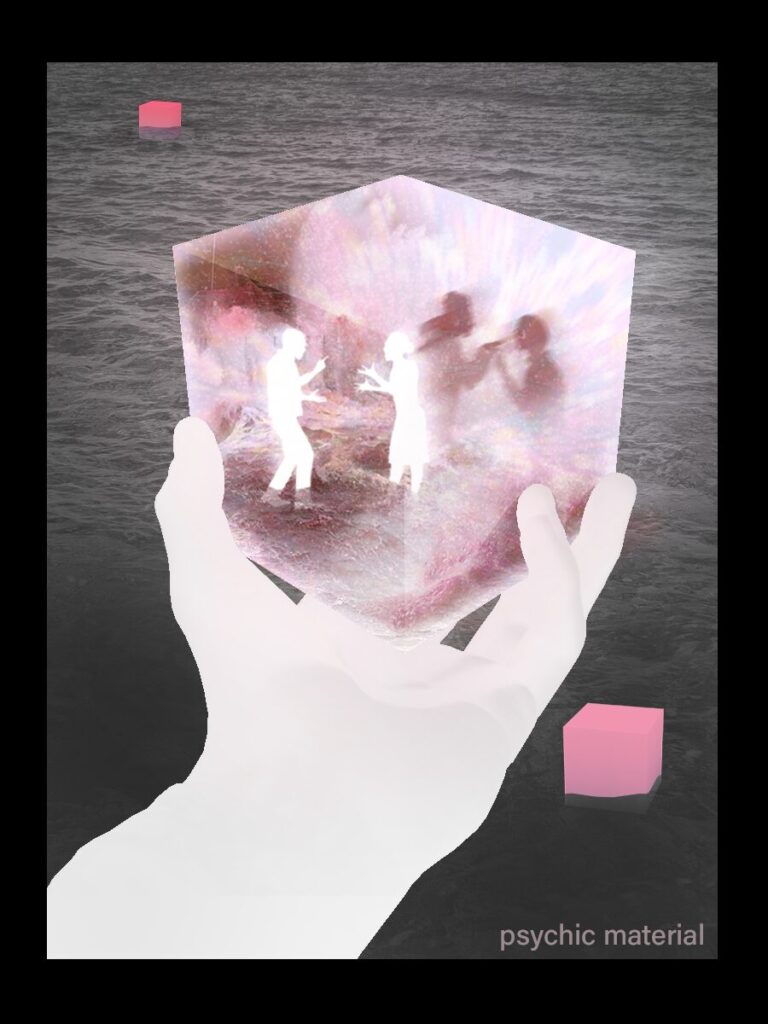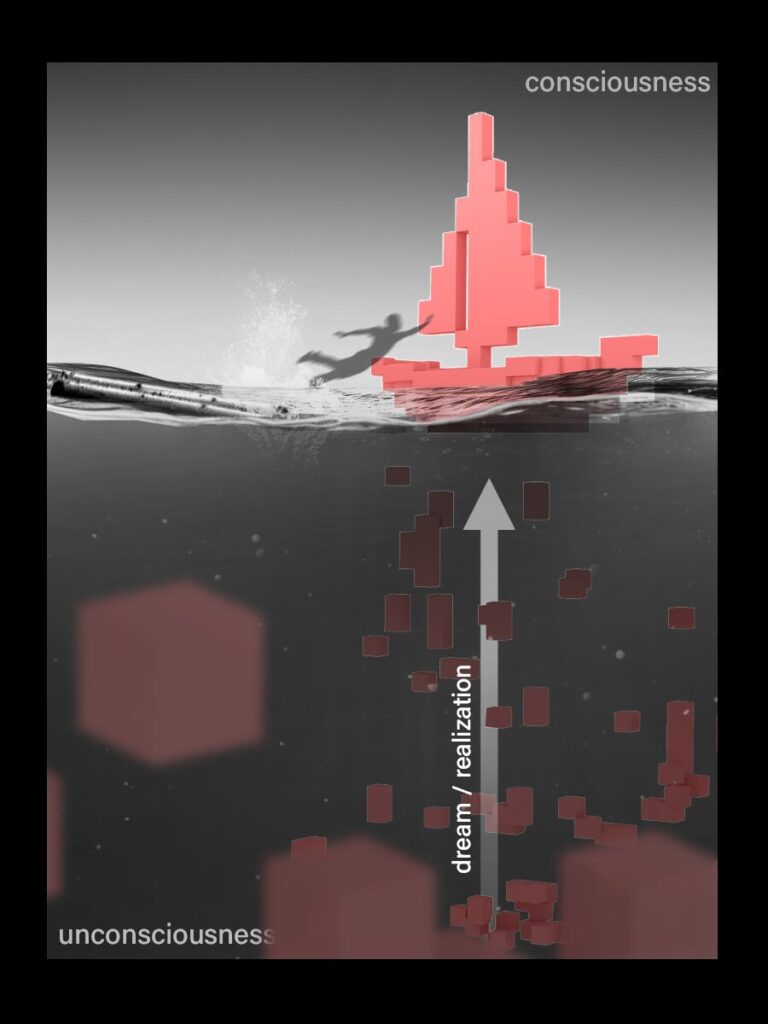We all wonder what dreams are trying to tell us. Are dreams random, or do they carry deeper significance? Many traditions of thought—particularly in Jungian psychology—regard dreams as profound expressions of the unconscious mind. So what are your dreams telling you? In short, your dreams are telling you about events that your unconscious mind is processing or things that you are unaware of.
In this post, we’ll explore the nature of dreams, the unconscious and how our experiences shape what we dream. We’ll also discuss how dreams can guide us toward self-awareness, provide solutions to life’s challenges, and reveal hidden facets of our personality. Whether you’re trying to learn where dreams come from or want to partner with your unconscious to better your life, this post will help you find answers.
What is the unconscious mind?
First, it’s important to understand the unconscious mind and the basic ways it operates. Everything you experience makes an impression on your consciousness. Sensation, thought and feeling are the most obvious of these experiences. The conscious mind experiences everything that you are aware of. The unconscious mind is simply the mind that processes what you are not aware of. In fact, much of your personality lives in or comes from your unconscious mind.
Psychic material
Entangled with your literal experiences are spiritual interpretations of these events. Swiss psychotherapist Carl Jung in his book, Man and His Symbols called these interpretations psychic material. This psychic material creates your mental and spiritual map of the world and allows you to interpret what you experience. Psychic material can be processed by your conscious and unconscious mind and is also the building block of your dreams.
To break this down we will use an illustration. I’ve also made some images to further clarify what I’m describing here.
- Imagine you are standing on a raft in the middle of the sea. Here, the surface of the water represents the boundary between your conscious and unconscious minds. Psychic material comprises of everything that stimulates your senses or mind. Red cubes represent psychic material in this illustration. In our analogous world, psychic material appears as you experience related events, or it emerges from underwater; your unconscious. (I suppose that the you standing on the raft would represent your ego or the center of your consciousness, but the focus of this article is more of the interaction between the conscious and unconscious mind.)
- You look out at the psychic material around you, reaching for some in an effort to make sense of it all. This is you reasoning with your experience in your conscious mind – analyzing a situation, processing an emotion or responding to a sensation.
Communication from the unconscious

- Some of this psychic material sinks into the ocean out of your view. This material is now unconscious to you. Forgetting, getting distracted or even willingly repressing experiences can send them into your unconscious and out of your awareness. Unconscious psychic material however, does not cease to exist, and instead continues to be digested and sorted by your unconscious. Sometimes the unconscious can even spit things back out to the surface of the water, i.e. a memory that resurfaces. The unconscious mind can also connect or dissect psychic material and synthesize entirely new things from them. The red blocks in our analogy depict this by combining into completely new shapes and forms.
Of course, in the real world, our thoughts and experiences are not red blocks, and they don’t come out of an ocean. So in what way can the unconscious mind communicate with the conscious? Answer: through dreams.
How dreams are made, and what dreams can tell us
Symbols – psychic material, translated
As we discussed earlier, all events leave psychic impressions on consciousness in the form of psychic material. The unconscious autonomously processes this material to make sense of things or create new ideas. Psychic material has no form however, and is often a combination of sensation, emotion, thought. As a result, the only way that the mind can communicate this psychic material to us is through the language of symbols. These symbols appear in rapid succession during a dream to communicate with your conscious mind.
Because dreams are symbolic rather than literal reflections of reality, they often are hard to understand. The structure and progression of a dream can be symbolic in its own way as well, presenting even more confusion. Despite this, the unconscious mind is still communicating with us to help us resolve issues in our lives, prepare us for things the conscious mind doesn’t see coming, or even tell us about parts of ourselves that we have not noticed or repressed.
Dreams can tell us how to resolve issues in our lives
Dreams often serve as a mirror to our inner struggles, offering symbolic representations of problems we face but may not fully understand. For instance, recurring dreams of being lost or trapped might reflect feelings of confusion or stagnation in our waking lives. Through these symbolic compositions, the unconscious mind brings attention to unresolved issues, encouraging us to confront fears, make decisions, or seek solutions we’ve been avoiding.
Example:
You had a big argument with your partner. The experience brought up intense emotions, creating related psychic material. That night, you dream of a flood and crashing waves, symbolizing the emotional overwhelm you felt during the argument. There is a lifeboat in the water, and inside is a teddy bear that you gave your partner on one of your first dates. The next morning you talk to your partner and bring the teddy bear with you. You both reminisce. Your partner voices that they were hurt and thought that you didn’t care about them, but after remembering how they felt about the teddy bear they voiced that they wanted to work with you to heal the wounds of the relationship.
This dream shows many symbols related to the argument, and also spontaneously generates a possible solution the dreamer was unaware of; the teddy bear. The psychic material was processed in the dreamer’s unconscious until a new idea emerged. In our analogy, the cubes of psychic material formed a sailboat to save you from the raft.


2. Dreams can prepare us for events we doesn’t see coming
Sometimes, dreams seem to act as a rehearsal for future events, offering insights into potential challenges or changes. For example, dreaming about a sudden storm before an actual unexpected life upheaval may symbolize the emotional turbulence ahead. The unconscious mind picks up on subtle cues in waking life, and weaves them into scenarios that prepare us emotionally and mentally for what lies ahead. These precognitive dreams, while not always literal, serve as an intuitive nudge, helping us build resilience or adjust our course in anticipation of unseen developments.
Example:
You’re relaxing on a beach building a sand castle. You suddenly notice the water receding unnaturally far. Tension builds as giant waves rush toward shore, flooding the beach and destroying your castle. As the water settles, you spot a golden treasure chest beneath the sand where your castle was. You wake up with a sense of alertness and head to work, where you hear rumors of an unexpected meeting. The tension in the air mirrors the unease from your dream. In the meeting, you’re informed you’re no longer on your current project. Afterward, you step outside for fresh air, seeking calm. When you return, an email reveals you’re needed on a new, exciting project that perfectly fits your skills.
3. Dreams can reveal parts of ourselves we have failed to notice or have repressed
Dreams can act as a spotlight on hidden aspects of our personality or emotions we’ve suppressed. A dream about an argument with a shadowy figure might represent internal tension with traits we dislike or deny in ourselves. Similarly, encountering a wise mentor or animal guide in a dream could symbolize untapped potential or qualities we’ve neglected. By paying attention to these figures and symbols, we can embrace a fuller understanding of who we are, integrating these neglected parts into a more complete and authentic self.
Example:
You are frantically running through the woods while being chased by a figure that looks like you, but is different. Somehow they seem more confident, stronger and more aggressive than you are. They seem angry, but they don’t seem to want to hurt you. They keep repeating “just look at me!”. You pass countless mirrors on the ground as you run. The figure catches you, then in a stunning turn of events, gives you a warm and reassuring hug. You feel invigorated and more stimulated than you ever have in your life. You wake up and reflect on the bolder side of you and how great it can be if you would let that part of yourself shine.
As you can see in these basic example scenarios, our unconscious minds can create and use many different types of dreams to assist us in our lives. Our unconscious minds can act as a super intelligent companion to us, giving nightly spiritual diagnostic checks to keep us aligned, limited only by the fact that it does not speak the same language as us.
What are your dreams telling you?
To begin understanding what your dreams are telling you, the first answer is simple. Listen to what they are saying! Here is how:
How to listen to what your dreams are saying
Write down your dreams
As soon as you wake up, write down either on paper or in your notes app as much as you can remember from your dream. Over time this will train your dream recall; your ability to remember your dreams, and you will be able to recount more and more detail which you can use to analyze your dreams later.
Know that your dreams are real
Know that your dreams are real, not fiction, and consider them as a serious and genuine dialogue between the conscious and unconscious sides of you. Your unconscious has collected every sensation you’ve ever felt to some degree, so it knows what it is talking about.
Analyze the symbols of your dream
Analyze your dream by attempting to connect the feelings or themes you noticed in your dreams with situations you’ve experienced in your waking life to identify potential topics that your unconscious is trying to bring up. You can greatly supplement this by researching common dream symbols in collective human culture, as dream symbols can often be inspired by common collective aspects of life. For instance, a tornado’s destructive power or a soldier’s strength and courage are common collective symbols. I’ve found that it’s also helpful to use a written dream as a prompt for ChatGPT to analyze. I often use the prompt “Can you analyze this dream as a Jungian analyst?” which can help initially analyze different dream symbols.
Implement what you learn
Once you’ve analyzed your dream , take action on the insights you’ve gained. Dreams are not just randomness—they often carry practical advice or highlight emotional needs that require attention. If your dreams reveal unresolved emotions, take time to process them or discuss them with yourself or others. If they are pointing to a hidden strength or neglected aspect of yourself, consider how you can integrate that into your daily life. The key is to treat your dreams as messages from an unconscious guide, using them to make conscious changes that align with your inner self. By actively implementing what you learn, you’ll deepen your relationship with your unconscious mind and start your journey towards growth, healing, and self-discovery.
In conclusion
Dreams are profound gateways into the depths of your unconscious mind, offering invaluable insights, guidance, and opportunities for growth. By listening to your dreams, taking them seriously, and learning to interpret their symbolic language, you open a channel of communication with an unseen side of yourself that can illuminate the hidden aspects of your life. By writing down your dreams, analyzing their symbols, and integrating their lessons into your waking life you can harness their wisdom. Your dreams are not random; they are the voice of your unconscious self, calling you to establish greater connectedness and wholeness within yourself.
Thank you for reading, and I hope this explanation was useful or informative to you. I will try to make posts here https://thelabyrintharchives.com/ once a week or so to explain more concepts like these that have helped me through my own journey of self discovery.
Find Carl Jung’s Man and His Symbols here: https://www.amazon.com/Man-His-Symbols-Carl-Jung/dp/0593499999/ref
– J
labyrinth – reach the center